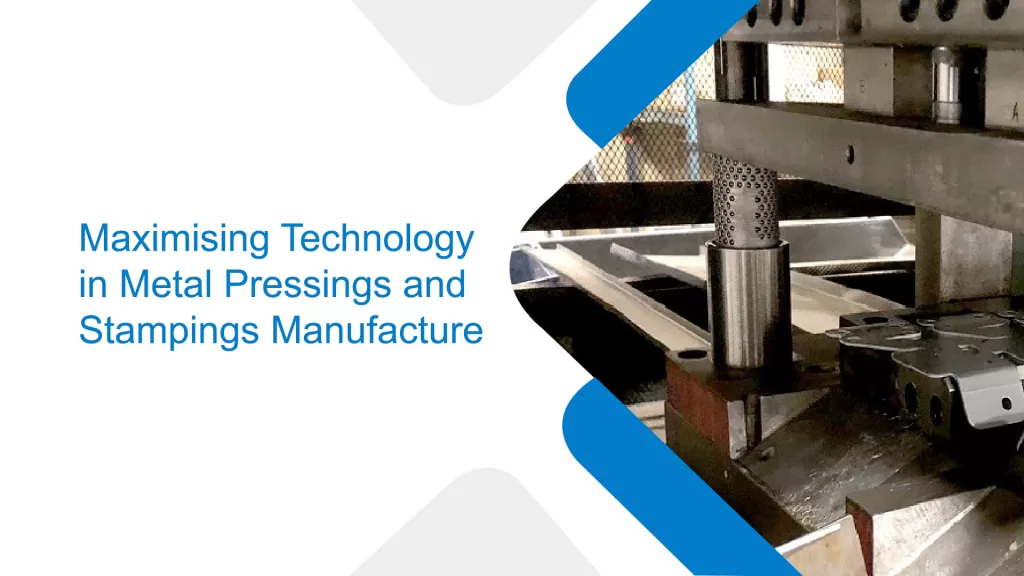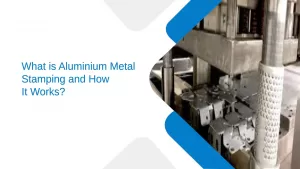Maximising Technology in Metal Pressings and Stampings Manufacture
- Metal Stamping |
- Aug 19, 2024

Hardware stamping components are crucial to many businesses in the intricate production world. Stamping dies create these parts meticulously, which is essential for manufacturers to keep their competitive edge.
The superior product proves the company’s commitment to consistently delivering high quality. Here mentioned are the maximizing technologies in metal pressing and stamping manufacture:
Using cutting-edge stamping technologies:
The remarkable ability of servo presses to provide precise control over stamping force and speed ensures high-quality results. In contrast, component accuracy is increased through laser cutting, which produces intricate cuts free of burrs.
Furthermore, labor cost reduction, productivity optimization, and continuous product quality verification are how robotic automation is reinventing production. Due to these advancements, the metal stamping business is evolving and becoming more precise and effective.
Accepting technological progress:
Manufacturers should consider implementing continuous stamping dies and promoting automated stamping production to remain ahead of the competition. This proactive strategy puts businesses at the forefront of technological innovation and increases efficiency.
Quality control:
Quality control is not only a phase in the production process but a crucial part of stamped components to stay functional and intact. Again, companies are shelling out big bucks on state-of-the-art machinery that automatically checks each part for safety and compliance using laser technology.
These systems can detect even the smallest deviations from specifications since they are rigorous and strong. With the help of these cutting-edge technologies, every tool and die set is guaranteed the exact tolerances required to satisfy the needs of the contemporary higher sector.
It is a fascinating process. This proactive approach minimizes waste and rework, which raises production and decreases expenses.
3D printing:
3D printing has changed the manufacturing industry by making it possible to create tangible products from digital models. Plastic, metal, or ceramic layers are deposited using sophisticated printers and computer-aided design to create complex prototypes.
Manufacturers who combine 3D printing technology with conventional metal stamping processes can produce complex products more quickly and economically. This is especially beneficial for small-batch and prototype manufacturing.
Sorting die procedures:
Die parameters must be efficiently referenced for prompt modifications and to sustain production flow. Die process cards should be stored and arranged, die pressure parameters should be noted, and labels should be used to facilitate easy reference.
These labels can be easily accessed by placing them in folders next to the press or attaching them directly to the dies.
Emphasis on eco-friendly production methods:
The metal pressings sector uses sustainable production techniques to maximize productivity while satisfying environmental and customer demands. By implementing innovative strategies that minimize trash production and maximize energy use, everyone concerned can look forward to a better future.
Some of the most well-liked techniques are reducing the amount of scrap produced, recycling materials wherever possible, reusing water, energy-efficient lighting, and renewable energy sources like solar power.
Increasing wear resistance with surface modifications:
Surface treatment of major forming components is an important part of metal stamping die optimization. By taking this calculated risk, the die surfaces’ resistance to wear increases, improving the stamped product’s overall quality.
Metal company stamping is not an exception to the growing concern about sustainability in the industrial sector. Manufacturers face pressure to reduce energy use, waste, and environmental effects. They are utilizing innovative materials and processes that minimize waste and energy consumption to tackle these issues.
As businesses work to lessen their impact on the environment and increase their bottom line, these sustainability trends are expected to expand throughout the metal stamping sector.
Integration of additive manufacturing:
Combining additive manufacturing, or 3D printing, with the advantages of metal stamping has made hybrid components conceivable. Detailed internal chambers and features that are hard to create with conventional stamping processes can be manufactured with additive manufacturing.
Improved precision and exactness:
Metal pressings require accuracy and precision because even a tiny deviation from the planned parameters could lead to mistakes or subpar output.
Manufacturers can decrease the probability of errors and malfunctions by employing these technologies to detect and resolve manufacturing issues promptly. Reduced waste, shorter lead times for manufacturing, and higher-quality products should all be the outcomes of this trend.
Machine learning can help stamping machines learn from their experiences and adjust to changing situations, increasing accuracy and decreasing waste.
Integrating AI and machine learning will increase productivity, product quality, and shorter manufacturing timelines. In a fierce market, having the capacity to optimize production processes instantly will be a big advantage.
Bottom line:
Those mentioned above are the latest technologies in metal pressing and stamp manufacturing. Technological developments are having a big impact on the metal stamping business.
Manufacturers who keep up with these developments and implement new methods and technology will have a competitive advantage. Staying updated about the technology in metal pressing will help you stand out in the competitive world.
Ujjwal handles crucial roles like AGM Marketing, researcher, and is an author for KDDL – Eigen. He currently works with Eigen for implementing proven techniques and strategies for marketing plans on online and offline platforms. An expert in efficiently executing SEO, SEM, email marketing, social media marketing, PR marketing, Print campaigns, etc. Ujjwal has coordinated an efficient marketing team on various creative campaigns and programmatic buying to support various digital cross-promotion efforts. Implement efficient search optimization strategies with the help of collateral material and metrics.
In his former years, Ujjwal has years of experience in a managerial role for several reputed companies. His years of experience combined with the flair of writing help him come up with result oriented strategies for Eigen.




